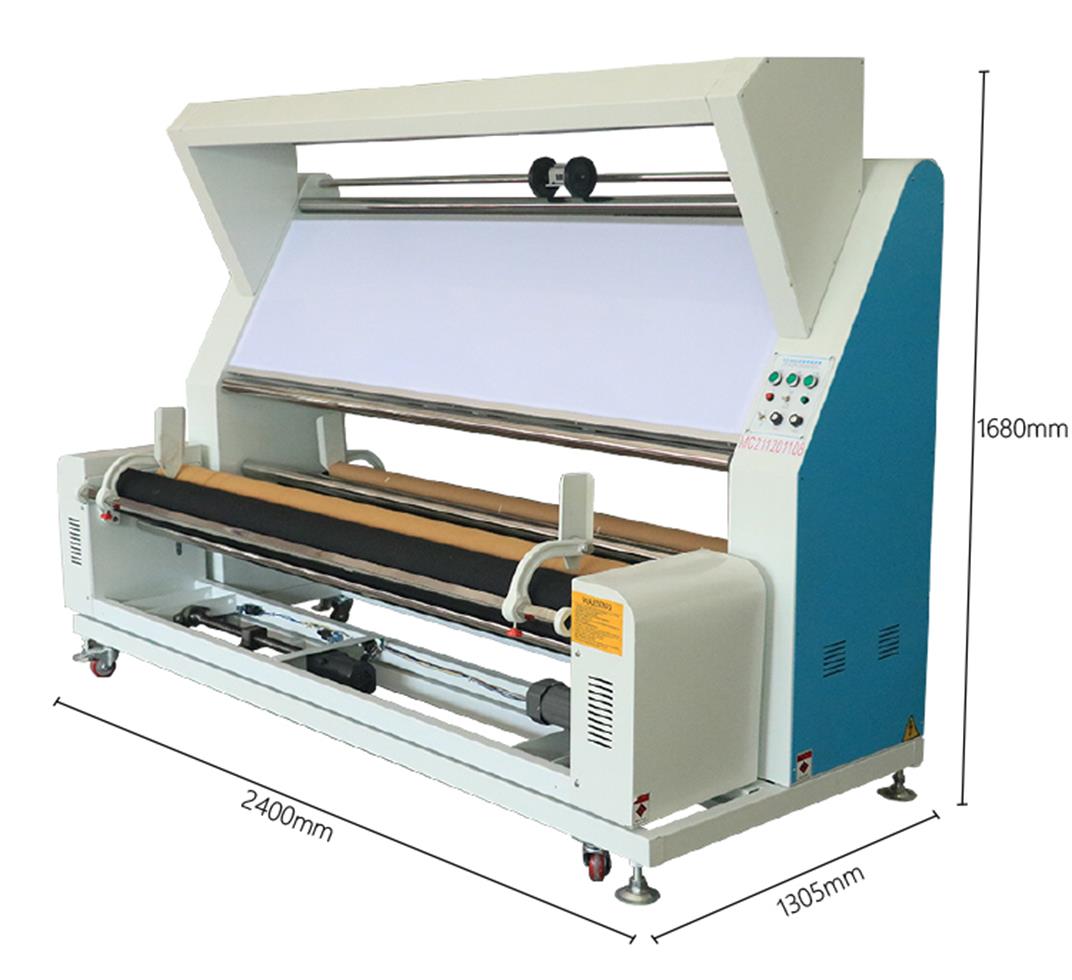The Cloth Rolling Machine, also known as a Fabric Rolling Machine, operates based on the principle of winding or rolling fabric onto a core or tube to create rolls of fabric of specific lengths or diameters. The process involves feeding the fabric onto a rotating roller or spindle while controlling tension and alignment to ensure uniform winding. The fabric is guided onto the core by various mechanisms, such as rollers or belts, while the roller rotates at a controlled speed. As the fabric wraps around the core, it forms layers, and the rolling process continues until the desired roll diameter or length is achieved.

Structure
Frame
The frame provides the structural support for the Cloth Rolling Machine and houses all its components. It is typically made of sturdy materials like steel to withstand the stresses of operation.
Roller or Spindle
The roller or spindle is a central component that rotates to roll the fabric onto a core or tube. It can be driven by an electric motor or other power source and is designed to accommodate different core sizes and fabric types.
Fabric Feed Mechanism
This mechanism is responsible for feeding the fabric onto the roller or spindle in a controlled manner. It may include rollers, belts, or other devices to guide the fabric and maintain proper tension throughout the rolling process.
Tension Control System
A tension control system ensures that the fabric is rolled onto the core with the appropriate tension to prevent stretching or wrinkling. It typically consists of sensors, actuators, and controllers that adjust the tension based on feedback from the rolling process.
Alignment Guides
Alignment guides help to ensure that the fabric is rolled onto the core evenly and without twisting or skewing. They can be adjustable to accommodate different fabric widths and thicknesses.
Core or Tube Handling
The Cloth Rolling Machine may include mechanisms for handling cores or tubes, such as loading and unloading devices or automatic core positioning systems.
Control System
A control system regulates the operation of the cloth rolling machine, including roller speed, tension control, alignment adjustments, and other relevant parameters. It may consist of manual controls, PLCs (Programmable Logic Controllers), HMI (Human-Machine Interface) panels, and other electronic components.
Safety Features
Safety features such as emergency stop buttons, guards, and interlocks are essential to protect operators and prevent accidents during operation.
Auxiliary Equipment
Depending on the specific application, cloth rolling machines may include additional auxiliary equipment such as cutting devices, labeling systems, and quality inspection sensors.
Enclosures and Covers
Enclosures and covers protect the internal components of the cloth rolling machine from dust, debris, and other contaminants, ensuring reliable and trouble-free operation.
In summary, a cloth rolling machine operates by feeding fabric onto a rotating roller or spindle, controlling tension and alignment, and rolling it onto a core or tube to create rolls of fabric. Its structure includes components such as the frame, roller or spindle, fabric feed mechanism, tension control system, alignment guides, control system, safety features, auxiliary equipment, and enclosures. These components work together to ensure efficient and precise rolling of fabric in various industrial applications.